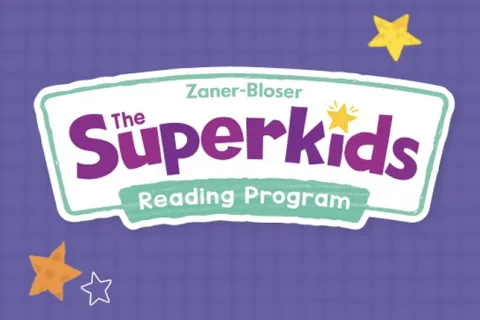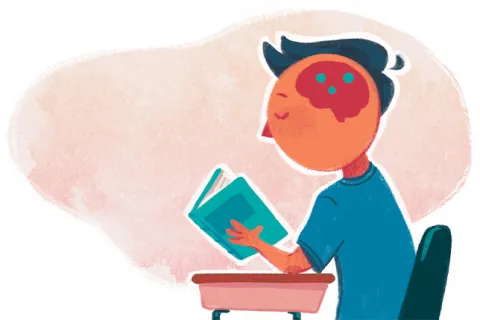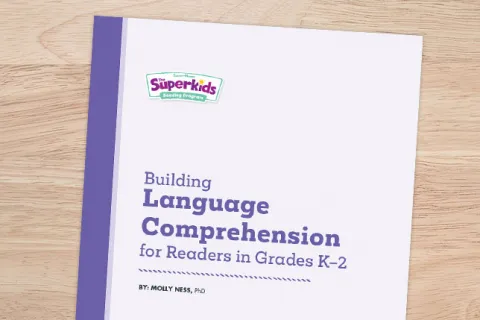
Introduction to the Science of Reading: Two Models
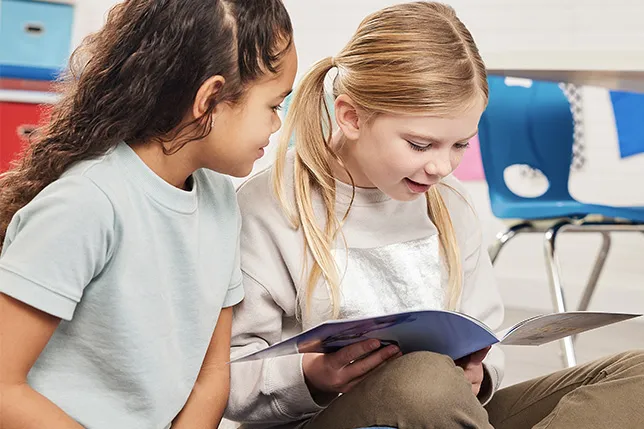
More than 40 years of scientific research by experts in education, psychology, neuroscience, and linguistics—including brain imaging technology and studies of thousands of students—has revealed what happens in the brain and what must happen in the classroom to enable skillful reading. Collectively, this research is known as the science of reading.
The Reading Brain
Perhaps the biggest revelation in the science of reading is that reading is not a natural ability. Some areas of the brain required for reading are present at birth, but others must be developed. Our brains rewire themselves to make reading possible. Existing neural circuits—such as those used for vision, language, and memory—are repurposed and connected in new ways as we receive explicit instruction and practice.
In fact, reading requires multiple parts of the brain to work together simultaneously. At least three different areas of the brain are active as we process letters and words like a mental dictionary, decipher unfamiliar words using phonics, match words to their contextual meanings, and process grammar and sentence structure. Connections between all of these grow stronger and faster with practice so that reading becomes automatic and fluent.
Two models have emerged from the science of reading research to help us make sense of what’s needed for skillful reading.
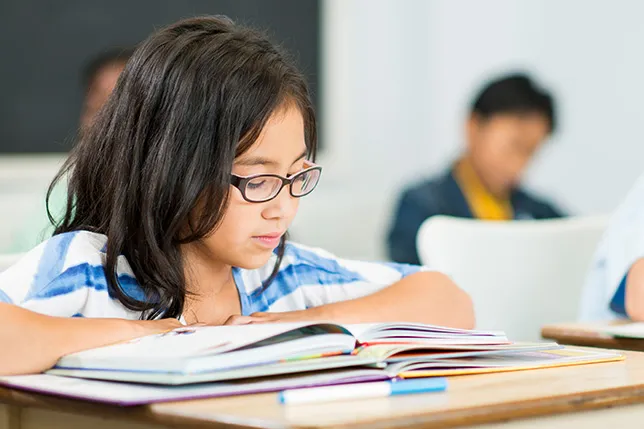
Model #1: The Simple View of Reading
In the Simple View of Reading, the essential skills needed for reading are simplified into two overarching categories—decoding (word recognition) and language comprehension. These two categories are framed as a multiplication equation with reading comprehension as the product or goal:
Decoding x Language Comprehension = Reading Comprehension
The equation exemplifies that strong reading comprehension occurs only when decoding and language comprehension are also strong.
To better understand the equation, we can assign values: zero (0) for weak skills and one (1) for strong skills. If decoding skills are weak (0) but language comprehension is strong (1), then the resulting reading comprehension is weak (0 x 1 = 0). Only when decoding and language comprehension are both strong will reading comprehension be strong (1 x 1 = 1).
The Simple View of Reading tells us children need to learn decoding skills and language comprehension skills simultaneously in order to read skillfully.
Model #2: Scarborough’s Reading Rope
Scarborough’s Reading Rope is another helpful theoretical model that expands upon the Simple View of Reading. It defines a set of subskills for word recognition (decoding) and language comprehension and provides a meaningful visual representation of how all the essential subskills are combined during skilled reading.
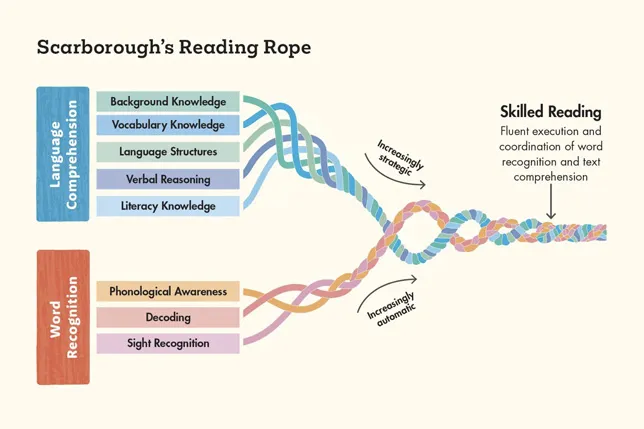
Language Comprehension Subskills
Background Knowledge refers to what students already know and helps them make connections and understand context.
Vocabulary is the meaning of words.
Language Structures include grammar, sentence structure, and how language works.
Verbal Reasoning is the ability to understand ideas that aren’t directly stated (e.g., inferences, metaphors, sarcasm, etc.).
Literacy Knowledge encompasses the general understanding of written language (e.g., how books are organized, how to follow a plot, how genres differ, etc.).
Word Recognition (Decoding) Subskills
Phonological Awareness is the ability to hear, identify, and manipulate individual sounds in spoken words.
Decoding refers to sounding out words.
Sight Recognition means instantly identifying words without having to sound them out.
According to Scarborough’s model, each subskill is a strand in the reading rope that becomes stronger and stronger the more tightly the strands are woven together. As language comprehension grows and gets stronger, the reader becomes increasingly strategic in their reading. At the same time, as word recognition subskills improve, the reading becomes increasingly automatic. With increasingly strategic and increasingly automatic reading, skilled reading occurs, and the reader can comprehend text.
Skilled reading appears effortless, but a skilled reader has fortified the subskills of the Reading Rope in order to manage the skills simultaneously and automatically.
Same Process for All Children
The science of reading reveals that all children learn to read in the same way. Cultural, economic, and educational circumstances obviously affect children’s progress, but what they need in order to learn does not change.
Evidence-Based Instruction with Superkids
The Superkids Reading Program is a comprehensive English language arts curriculum crafted specifically for students in grades K–2. The systematic, explicit instruction and relatable cast of characters solidifies essential foundational skills and grows students’ confidence as readers. Download a brochure to learn how Superkids reflects scientifically based reading research.
You May Also Like
